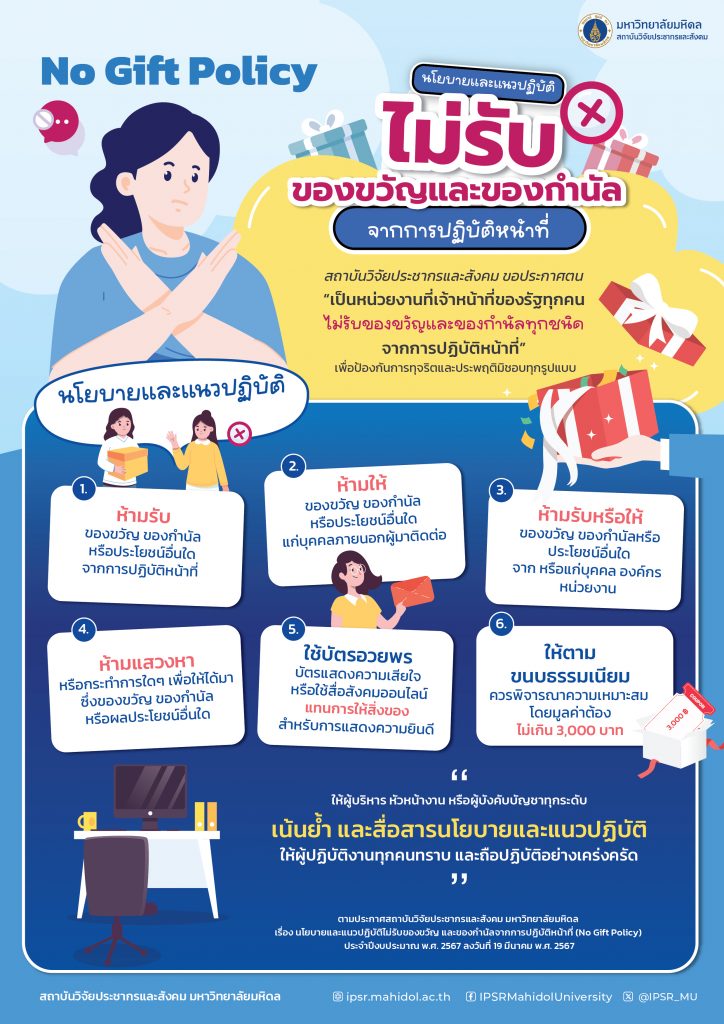ระยะเวลาดำเนินงาน:
สถานะ: เสร็จสิ้นโครงการ
หัวหน้าโครงการ: สุรีย์พร พันพึ่ง
นักวิจัย: มาลี สันภูวรรณ์, เสาวภาค สุขสินชัย, ปาณฉัตร ทิพย์สุข
วัตถุประสงค์:
Objectives of the Rapid Assessment : The overall objective of the rapid assessment is to give a picture of the use of child labour in one supply chain in Thailand. The supply-chain selected for this research is natural rubber, and the focus of the research will be on children working in rubber plantations. The primary objectives of this study are to:
1) Generate quantitative data on the child labour situation in rubber plantations in Thailand through direct interviews with working children and their parents. The data should, among others, reflex the following:
a. personal information of the working children, including age, sex and nationality as well as their socio- economic situation, educational status and living conditions (food, communication with outsiders, accommodation, sanitation etc);
b. working conditions including factors such as wage, working hours, day off, conditions of paid, freedom of movement, physical and/or psychological abuse etc. This part should also identify the proportion of working children that are working in conditions that can be characterized as the worst forms of child labour;
c. analyze if there are any differences in working conditions and overall economic and social context between girls and boys, and children of different nationalities and ages;
d. the proportion of children and adult workers in the plantations and the factors that draw children into child labour (employers, children’s families,neighbors and communities, etc.);
2) Provide an overall picture of the rubber-supply chain in Thailand, i.e. describe the various production stages that the product passes through from the initial production of the raw latex until the various final products has reached their end consumers. This includes describing all key steps from the initial planting of the rubber tree stickling, the tapping of the latex, the distribution channels and the production of various final products such as tires and tubes, and other general rubber goods and textiles. This part of the research should also examine – in a qualitative way – how the overall value chain links to child labour.
3) Describe available support mechanisms (community, employer, informal networks etc.) and propose recommendations for all key stakeholders including government agencies, employers/plantation owners, and civil society organizations, on how to take action to combat child labour and its worst forms in this particular sector.

